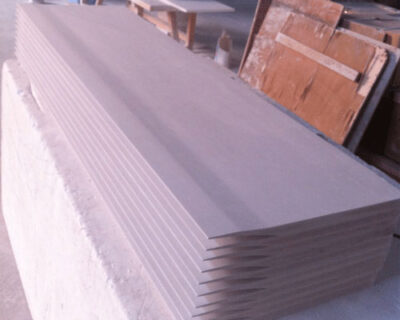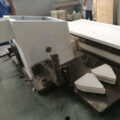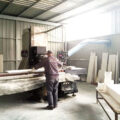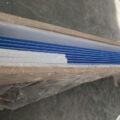The casting tip and nozzle is a key component that feeds the aluminum melt into the continuous casting machine. It is a consumable product and is prone to blockage in actual production. Once blocked, it must be shut down for cleaning or replacement before continuing production, which greatly reduces production efficiency. For this reason, some scholars have conducted research on the phenomenon of slag clogging in the casting nozzle of the continuous casting machine.
During the continuous casting process, the molten aluminum will continuously react with the nozzle material to form Al2O3 slag inclusions. In the initial stage of production, the surface of the inner wall of the nozzle is smooth, and the flow rate of the molten aluminum is relatively fast, which can continuously wash away the reaction products (Al2O3 and elemental silicon) on the inner wall surface. The alloy formed by Al2O3 and elemental silicon and aluminum (partially soluble in molten aluminum when the silicon content is small) enters the molten aluminum, and at the same time, the temperature of the molten aluminum in contact with the inner wall of the nozzle is lower. These two factors work together to cause the molten aluminum viscosity increases and the flow rate decreases, thereby reducing the scouring ability of the molten aluminum, resulting in more and more slag inclusions on the inner wall of the casting nozzle, and the cavity is getting narrower and narrower.
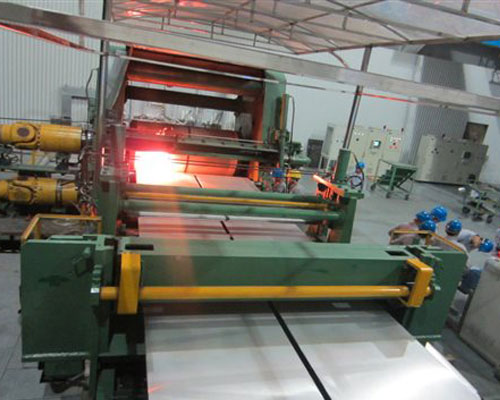
In addition, since the casting tip and nozzle material is a porous material, the reaction between the molten aluminum and the nozzle material not only occurs on the surface, but also inside. Under the scouring action of the molten aluminum, the reaction products will form tiny pits on the surface of the nozzle when they are separated, and the reaction products will be loose and porous. These will increase the surface roughness of the inner wall of the nozzle; while the molten aluminum will be more on the rough surface. Prone to solidification. Therefore, as the continuous casting progresses, there are more and more slag inclusions on the inner wall surface of the casting nozzle, and the aluminum liquid channel is constantly narrowing, eventually causing the aluminum liquid to fail to flow and the casting nozzle to block.

